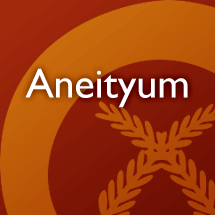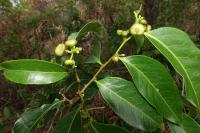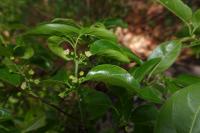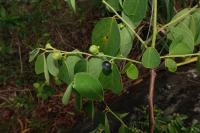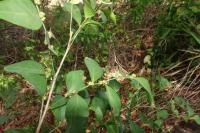Your search for * in family Phyllanthaceae has returned 17 entries
namji
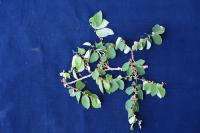
n. tree, 4 m tall (collection: Gregory M. Plunkett #3508)
Example: 1. The stems of this plant are sharpened and used to plant swamp taro or dry land taro. 2. Break small branch top put behind ear if you go to an unknown place and keep behind ear and sleep with it. If the place is safe you will sleep if it is not you will not sleep well – only behind ear when you sleep.
bookmarknamlau
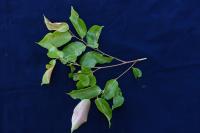
n. shrub, 2 m tall (collection: Gregory M. Plunkett #3485)
Example: 1. The larger stems of this plant can be used to build houses, for rafters. 2. It is also a good source of firewood. 3. Ancestors, before go to chief’s canal and want to talk about a complicated issue – a person would cut a branch and bring it to the sea and tap the water surface and would say what he wants, ask that he would want that issue to be solved and that others would follow his ideas and then go back to the meeting place and take stick, keep wind at his back, moving stick in all directions and then he will convince the people of his ideas. This is done by the chief’s spokesman. Helps convince the opposition. Helps keep power in hands of parent(??) chief rather than subchiefs who might have other ideas.
bookmarknamlau
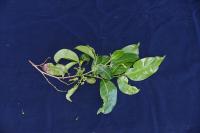
n. shrub, 2 m tall (collection: Gregory M. Plunkett #3490)
Example: 1. The larger stems of this plant can be used to build houses, for rafters. 2. It is also a good source of firewood. 3. Ancestors, before go to chief’s canal and want to talk about a complicated issue – a person would cut a branch and bring it to the sea and tap the water surface and would say what he wants, ask that he would want that issue to be solved and that others would follow his ideas and then go back to the meeting place and take stick, keep wind at his back, moving stick in all directions and then he will convince the people of his ideas. This is done by the chief’s spokesman. Helps convince the opposition. Helps keep power in hands of parent(??) chief rather than subchiefs who might have other ideas.
bookmarknamlau
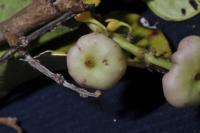
namlau
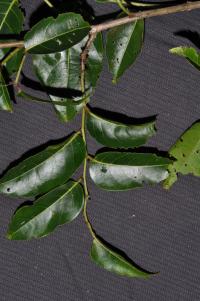
namlau
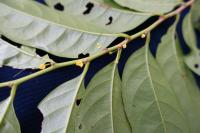
n. tree to 15 m tall, dbh 40 com (collection: Michael J. Balick #4857)
Example: The wood of this tree is good for carving. The fibers go in one direction so it is easier to carve, for example, to make a kava bowl. In general, this is the species used to make kava bowls. If your kava is not strong, then making it in this bowl will make it stronger. The kind of bowl made from this tree has a handle on each side of the bowl and it is held with 2 hands. The place name Anumwmamlau is named after this tree. There are said to be two types of this tree--one with all green leaves (this specimen) and one with white and green leaves. If a person is going to a Tabu place and is concerned about spirits, they should take a handful of these leaves and wash the body all over with it--take a swim (bath) with it. Then the person can go to the Tabu place without risk. There are other unspecified spiritual uses of this tree.
bookmarknamlau elwa
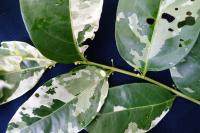
n. tree to 15 m tall, dbh 40 cm (collection: Michael J. Balick #4859)
Example: The wood of this tree is good for carving. The fibers go in one direction so it is easier to carve, for example, to make a kava bowl. In general, this is the species used to make kava bowls. If your kava is not strong, then making it in this bowl will make it stronger. The kind of bowl made from this tree has a handle on each side of the bowl and it is held with 2 hands. The place name Anumwmamlau is named after this tree. There are said to be two types of this tree--one with all green leaves (this specimen) and one with white and green leaves. If a person is going to a Tabu place and is concerned about spirits, they should take a handful of these leaves and wash the body all over with it--take a swim (bath) with it. Then the person can go to the Tabu place without risk. There are other unspecified spiritual uses of this tree. The second part of this local name "elwa" refers to the variegation of the leaves.
bookmarknamlau or nida
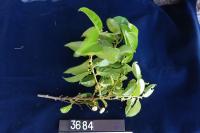
nasjiñaho
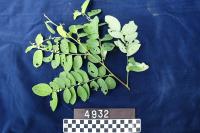
nasjiñao
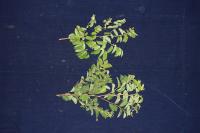
naupitcat
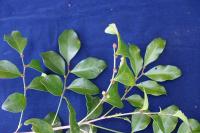
nijom̃kan
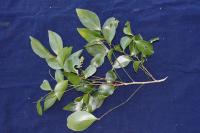
n. shrub, 1 m tall (collection: Gregory M. Plunkett #3484)
Example: Name means smash tooth. 1. This is part of an unspecified mixture that can be used as a spell to give another person a toothache. 2. Toothache – chew leaves on the sore tooth and leave it there for a while and spit it out – it will break the tooth and you can take it out, leave on 20 minutes.
bookmarknijom̃kan
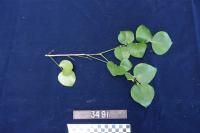
n. shrub, 1 m tall (collection: Gregory M. Plunkett #3491)
Example: Name means smash tooth. 1. This is part of an unspecified mixture that can be used as a spell to give another person a toothache. 2. Toothache – chew leaves on the sore tooth and leave it there for a while and spit it out – it will break the tooth and you can take it out, leave on 20 minutes.
bookmark